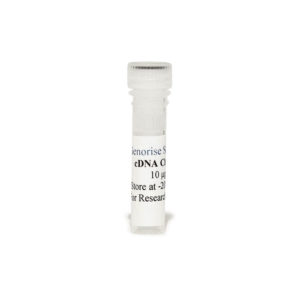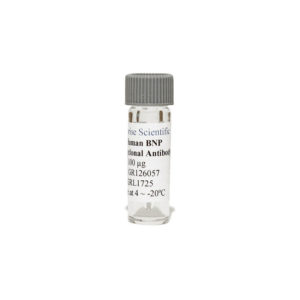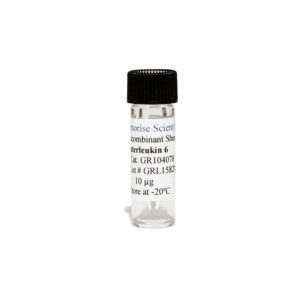Recombinant Human TLR9 Protein
$99.00 – $456.00
The recombinant human TLR9 protein is derived from in vitro expression of human TLR9 gene in E. coli and purified using his-tag affinity column and can be used in multiple applications such as cell culture, ELISA and western blot.
Alternative names for TLR9: Toll-like receptor 9, CD289
This product is for Laboratory Research Use Only not for diagnostic and therapeutic purposes or any other purposes.
- Description
- Product Citations
- Reviews (0)
Description
Genorise Recombinant Human TLR9 Protein Summary
Alternative names for TLR9: Toll-like receptor 9, CD289
Product Specifications
| Purity | > 96%, by SDSPAGE under reducing conditions and visualized by silver stain. |
| Endotoxin Level | < 0.1 EU per 1 μg of the protein by the LAL method. |
| Activity | na |
| Source | E. coli derived human TLR9. |
| Accession # | Q9NR96 |
| N-Terminal Sequence Analysis | Leu |
| Amino Acid Sequence | Leu24-Thr637 |
| Predicted Molecular Mass | 67 kDa |
| SDS-PAGE | 67 kDa, reducing conditions |
Background:
Toll-like receptor 9 (TLR9) has also been designated as CD289. TLR9 is a member of the toll-like receptor (TLR) family which plays a fundamental role in pathogen recognition and activation of innate immunity (1). TLRs are named for the high degree of conservation in structure and function seen between mammalian TLRs and the Drosophila transmembrane protein Toll. TLRs are transmembrane proteins, expressed on the cell surface and the endocytic compartment and recognize pathogen-associated molecular patterns (PAMPs) that are expressed on infectious agents and initiate signalling to induce production of cytokines necessary for the innate immunity and subsequent adaptive immunity. The various TLRs exhibit different patterns of expression. This gene is preferentially expressed in immune cell rich tissues, such as spleen, lymph node, bone marrow and peripheral blood leukocytes. Studies in mice and human indicate that this receptor mediates cellular response to unmethylated CpG dinucleotides in bacterial DNA to mount an innate immune response(2). TLR9 recognizes unmethylated CpG sequences in DNA molecules. CpG sites are relatively rare (~1%) on vertebrate genomes in comparison to bacterial genomes or viral DNA. TLR9 is expressed by numerous cells of the immune system such as dendritic cells, B lymphocytes , monocytes and natural killer (NK) cells. TLR9 is expressed intracellularly, within the endosomal compartments and functions to alert the immune system of viral and bacterial infections by binding to DNA rich in CpG motifs. TLR9 signals leads to activation of the cells initiating pro-inflammatory reactions that result in the production of cytokines such as type-I interferon and IL-12. There are new immunomodulatory treatments undergoing testing which involve the administration of artificial DNA oligonucleotides containing the CpG motif. CpG DNA has applications in treating allergies such as asthma (3), immunostimulation against cancer (4), immunostimulation against pathogens, and as adjuvants in vaccines (5).TLR9 has been shown to interact with RNF216 (6).
References
- Du X, et al. Eur Cytokine Netw 11 (3): 362–71.
- Entrez Gene: TLR9 toll-like receptor 9.
- Kline JN. Proc Am Thorac Soc 4 (3): 283–8.
- Thompson JA, et al. Journal of Clinical Oncology, 2004 ASCO Annual Meeting Proceedings (Post-Meeting Edition) 22 (14S).
- Klinman DM. Int. Rev. Immunol. 25 (3-4): 135–54.
- Chuang TH and Ulevitch RJ. Nat. Immunol. 5 (5): 495–502
Product Citations
Be the first to review “Recombinant Human TLR9 Protein”
You must be logged in to post a review.





























Reviews
There are no reviews yet.